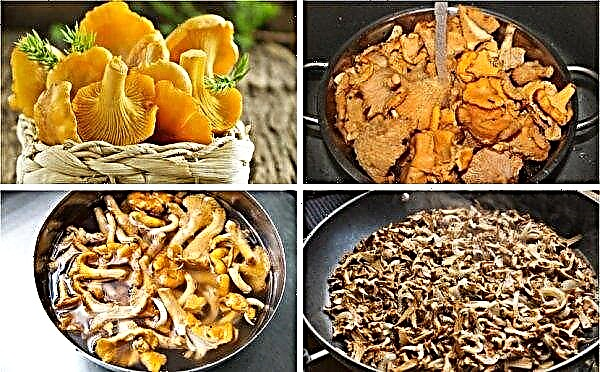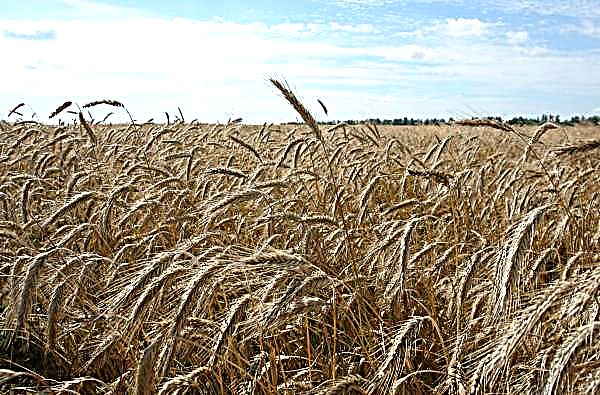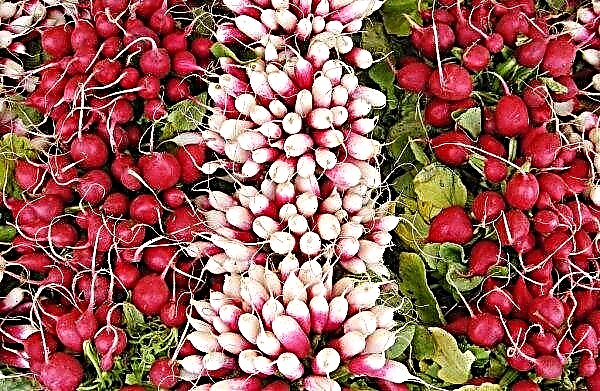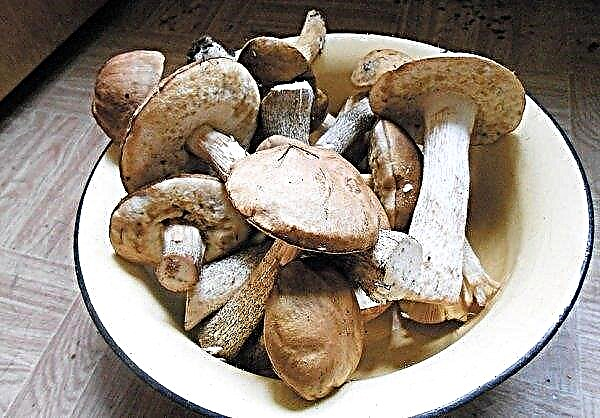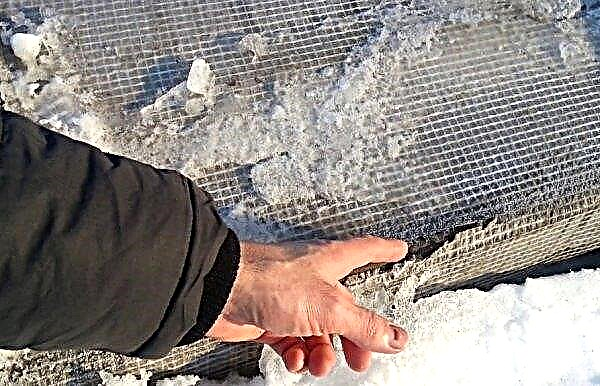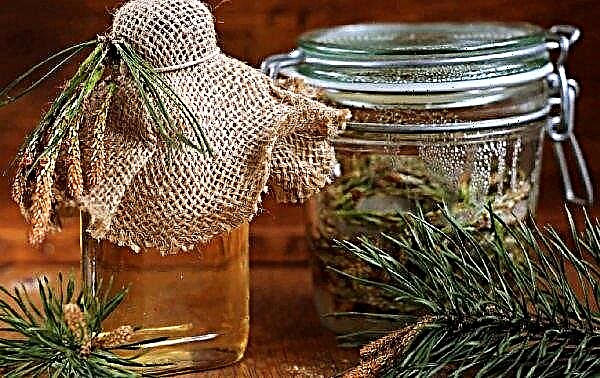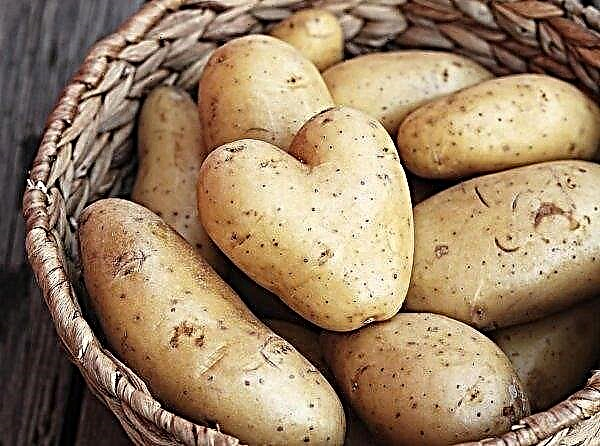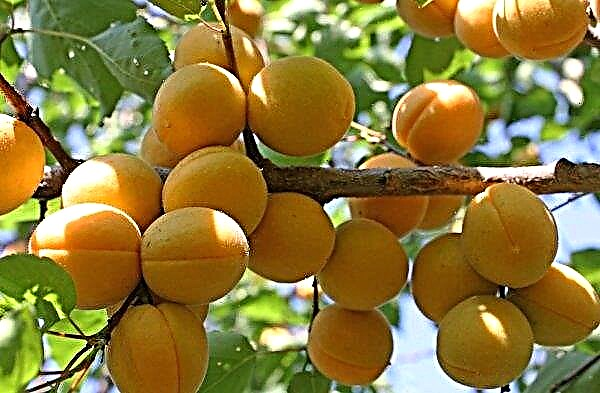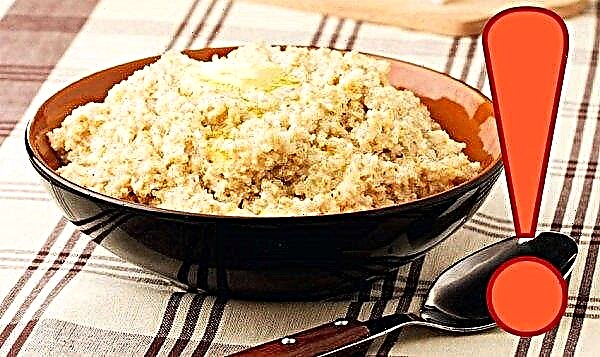It used to be possible to grow large-leaved hydrangea only as a houseplant, but breeders over the past 30–40 years have created many varieties that are more resistant to the harsh winters of our climate. So Long Rosie is one of them. We’ll talk about him today.
Grade description
So Long Rosie is the newest variety of large-leaved hydrangea, bred by French breeder Jacques Coutouriex. Due to the similarity of appearance and other characteristics, it is often compared with representatives of the Endless Summer cultivar. This variety has not yet managed to spread in Russia, so seedlings can be difficult to obtain. However, if you want to acquire a foreign plant that impresses with its unusual appearance, and also does not die from frost, So Long Rosie will be an ideal option.

The variety is used for growing both in open ground and in containers. Often, gardeners resort to planting hydrangeas in a garden composition, although it also looks great as a single plant.
Did you know? The scientific name of the plant — hydrangea — literally can be translated as “a vessel with water”, which indicates a great love of hydrangea moisture.
Main characteristics
The maximum attainable height of Long Long Rosy is 1–1.2 m, width is 0.75–1 m. One of the impressive qualities of this cultivar can be considered the appearance of inflorescences (their diameter is about 15 cm) on the shoots of last and current year throughout the season, which lasts from July to early October. The flowers are bright pink, but during their ripening acquire a greenish tint, pronounced at the tips of the petals. The shrub itself is compact, its crown is dense and naturally rounded, the leaves are dark green, have notches at the edges.
 Most preferred is partial shade or a place filled with a large amount of diffused light.
Most preferred is partial shade or a place filled with a large amount of diffused light.
It is possible to propagate the plant independently by dividing old strong representatives by horizontal layers and grassy cuttings. But it is worth considering that without certain knowledge in this industry, the first attempts may not succeed. Subsequently, experience and proper care will help to grow new hydrangea seedlings.
Features of planting and care
The plant prefers slightly or medium acid (pH not more than 5.5) soil. Soil for large-leaved hydrangea should consist of:
- turf land;
- deciduous humus;
- sand;
- peat;
- compost.
 All of the above components are added in equal proportions 1: 1: 1: 1: 1.
All of the above components are added in equal proportions 1: 1: 1: 1: 1.
The analyzer (acid meter) will show the most accurate result, but if you don’t have one, you can buy litmus paper in the store. Some soil is bred in water and the acidity of the water extract is determined. Experienced plant growers suggest taking currant leaves (1-2 pieces will be enough), brew in boiling water, and then take a small lump of soil and lower it into the solution. If it turns red, it means that the soil is acidic, if it turns green - slightly acidic, the blue color indicates neutrality. None of the described methods will show the exact result, but will allow you to roughly navigate.

In addition, hydrangea has an interesting property - to change the color of flowers depending on the acidity of the soil. Pink inflorescences indicate a slightly alkaline reaction, blue or blue indicate a high acidity.
Important! Cultivar So Long Rosie suffers from lime in the ground, so it is important to control the level of acidity.
The landing site is selected slightly shaded, but in no case under a tree, since it absorbs most of the moisture. An excess of the sun contributes to the overdrying of the soil, and a complete shadow - to late flowering and smaller inflorescences. It is necessary to find a middle ground - for example, plant a bush so that the base is in the shade, and in the sun only its upper part.
It is recommended to resort to the procedure in the spring, when the soil has already warmed up and the threat of frost has passed.
Landing is as follows:
- A hole with a depth and width of about 50 cm is dug in the selected area if the seedling is medium, and 35 × 35 cm will be enough for a shallow one.
- With heavy soil, a drainage layer is laid at the bottom, for any other, the resulting earthen mixture is immediately used.
- The roots are immersed for about half an hour in water to get wet.
- When planting hydrangea, her neck does not deepen much, since young growth will appear from it.
- The roots are sprinkled with soil, the soil is watered abundantly, mulched by peat, needles and sawdust.

Most of the success is proper care. Water for irrigation is used soft, preferably rain. However, if there is a problem with precipitation, add vinegar, lemon juice or a drop of electrolyte to the distilled tap water. The norm for one bush per week is 2 buckets. When using mulch and the presence of short-term rains, it is allowed to reduce the frequency to 1 time per month.
Important! Neglecting tips for tap water, you risk provoking leaf chlorosis in your plant.
Young hydrangeas do not need pruning. However, it is appropriate for cosmetic and sanitary purposes, it must be extremely superficial. Adult bushes form a lot of flowering growths, if they are not trimmed. To rejuvenate and stimulate growth, several branches are cut out. Inflorescences are pruned in spring and autumn, but the second option is preferable - the sources of diseases do not penetrate winter shelters.

Top dressing is an essential part of plant care. It is not worth experimenting in this matter, it is advisable to purchase a complex fertilizer specially designed for hydrangea. Additionally, you can use humus or liquid manure, but in this case it is important not to overdo it. In no case should you feed representatives of the So Long Rosie variety with ash, because they do not like alkaline soil. They resort to the procedure twice a year - in spring, before blooming, and in autumn, shortly before the end of flowering.

Frost resistance and wintering
Despite its high frost resistance (up to -29 ° С), without shelter, even in the southern regions of the country, the bush has a high probability of not blooming at least. Preparation for wintering should begin already with the onset of autumn: in dry weather, water abundantly, and also spray with a Bordeaux mixture. So hydrangea is much easier to tolerate frosts, under the shelter its branches will not be barred, immunity to fungal diseases will appear.
Did you know? In Japan, hydrangea is called "adzisai", which means "purple sunny flower."
In the second half of October and early November, night frosts are observed, so it's time to sprinkle the lower part of the bush with peat, and then gently bend the branches and cover everything with sawdust, leaves and cover with lapnik. Top landing cover agrofibre and slate / roofing material. For lack of these materials, you can simply take a wooden box or an unnecessary box.

Guided by the above tips for growing and caring for a new representative of hydrangea, So Long Rosie, you can easily diversify the free space of your summer cottage or add to your existing flower arrangement.

